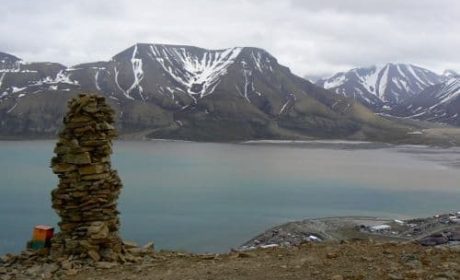Is visiting the Giant’s Causeway in Ireland on your bucket list? It’s certainly on ours at My Itchy Travel Feet. This grand geological marvel is reminiscent of smaller Devil’s Postpile in California. The rhyolite formations in Arizona’s Chiricahua National Monument are an even smaller example.
Lorna Real is here to take us to one of Ireland’s most popular National Parks, the Giants Causeway.
Ireland, a quaint country-island facing the Atlantic Ocean, has been a second home to my husband and me for over a decade now. We ventured here with the hope of greater opportunities and decent quality of life.
What we like about Ireland in general is its relaxing atmosphere: the lush of greenery and the well-preserved heritage sites amidst the era of modernization.
Table of Contents
Visiting Ireland’s Giants Causeway

Whenever we can, my husband and I go on short trips to enjoy different wonders of nature the country has to offer. One of the highlights of our Irish adventures was our time exploring Giant’s Causeway.

This natural wonder lies along the sea coast of County Antrim, Northern Ireland (part of the United Kingdom). It is roughly 60 miles away from Belfast to Giants Causeway. The area is known for its odd landscape, which includes towers of interlocking basalt columns that expand out to the shoreline.
Giant’s Causeway legend

The Legend of the Giant’s Causeway says that an Irish giant was determined to defeat his most fierce enemy, another giant from the Scottish Isle of Staffa. The Irish giant did not want to get his feet wet so he built the causeway across the sea to Scotland, where he summoned his enemy for a fight.
When he realized that his Scottish counterpart was much bigger than he expected, the Irish giant retracted quickly and made his way home disguised as a baby tucked in a cradle.
Not one to back down from a challenge, the Scottish giant followed him to Ireland. But, when he saw the size of the ‘baby’, he got frightened that the baby’s father must be a giant among the giants. He turned-tail and ran away back to Scotland, destroying the causeway behind him.
Giant’s Causeway facts

While the legend sounds amusing, the Giant’s Causeway itself is really astonishing! Resulting from a volcanic eruption 60 million years ago, the Giant’s Causeway has about 40,000 gently inclined interlocking formations made of basalt (volcanic rocks or solidified lava) sticking out of the sea. Most of the rocks are seven, six or five-sided, while some are four or eight-sided.
It is perplexing to think that massive volcanic eruptions could result into something symmetrical and perfectly-spaced patterns. Geologists explain this process as columnar jointing where columns form out of rock (most commonly volcanic rock), creating a hexagonal shape as the rock cools and contracts.
In the case of the Giant’s Causeway, when lava flowed out to the sea, the basalt cooled rapidly from the outside toward the center, causing shrinkage cracks to form, breaking up the columns in the process.
What to expect on a visit to Giant’s Causeway

It’s about half a mile walk down to the Giant’s Causeway from the Visitor Center, following along steep slopes and gravel paths. But it’s not rigorous walk, you will be rewarded with stunning views and picture-postcard scenery along the way.

If walking is not your cup of tea, there are shuttle buses plying the route for £1 (US$ 1.30). We opted to walk, stopped when we felt like it and explored at our own pace.

The Giant’s Causeway is listed as a World Heritage Site by UNESCO. We’ve been wanting to see it and it did not fail to impress us. We spent two hours walking on columns and exploring the gorgeous Northern Ireland coastal waters.

The chance to walk, climb and get up close the basalt columns makes the experience even worthwhile. It’s mind-boggling how these geological formations came into existence. Yet undoubtedly, there is magic in the causeway. A breath-taking masterpiece of nature! You can check on the official website to find out more.
Tips for visiting the Giant’s Causeway

- The attraction involves walking, climbing over the rocks, getting close to the water’s edge, so wear your comfy walking shoes.
- We were lucky during our visit and got a glorious amount of sunshine. If you’re going during the cold season, just bundle up. The wind and the rain can make it extremely cold.
- There are limited dining options here which can be very expensive. We recommend bringing your own food. In our case, our coach tour stopped by The Giant’s Barn (7 Causeway Rd, Bushmills BT57 8SU, UK) which is 3 miles from the causeway. The menu was extensive; the food was great with good portion sizes and so worth the price. You can check some reviews of the restaurant here:
- As a National Park, it is free to visit. From the carpark, you make your way to the Giant’s Causeway. If you want to go to the Visitor Experience Center, the admission price is £9 (US$ 12). It’s possible to purchase your ticket in advance.
- The currency is Pound Sterling £, but Euros are also accepted.
You’ll find an assortment of Giant’s Causeway tours leaving from Belfast or Dublin. We like the selections at Get Your Guide.



